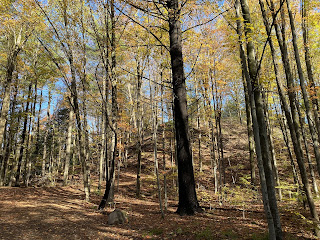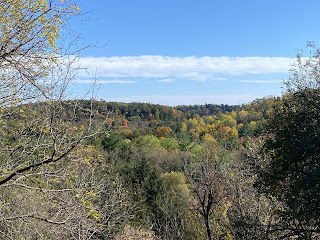Rouge National Urban Park (RNUP) was formally established in 2015 and is the first of its kind in Canada. Rouge National Urban Park is 79.1 kms square, making it one of the largest and best protected urban parks in the world (it’s 22 times larger than Central Park in New York City). The park landscape includes forests, meadows, rivers, wetlands, and some of the most fertile farmland in the country. Rouge National Urban Park is the first federal protected area in Canada to protect agriculture alongside nature and cultural heritage.
Despite living within an easy drive of this amazing area, this is the first time I have ever been to it. I hiked a couple of the trails today and am looking forward to exploring more in the future.
Sections of the trails I was walking today were along Little Rouge Creek, one of the tributaries of the Rouge River.
I loved this tree root - it looked like a big snake in the grass!
Eastern Red Cedar berries
One of many wetland areas within RNUP.
This little duck was enjoying the scenery as well!
The Pearse House currently serves as the home of the Rouge Valley Conservation Centre but this historic home dates back to the 1800s. A modest cottage was built by James Jr. Pearse in 1869 and then in 1893 the family completed a major expansion, creating the Pearse House as it appears today - a 1.5 storey brick-veneered farmhouse.
The moon still visible (up from and to the left of the middle tree) at noon.
Better stick to the trail, or you’re rolling down a hill on both sides!
Many sawmills and grist mills were built in the mid-19th century in the Rouge Valley - by 1861 there were 28 grist mills and 89 sawmills built along the Rouge River. One of the last operational mills in the Rouge was Maxwell’s Mill and some of the foundations of it can still be found today.
This area is known as Glen Eagles Vista. Where I’m standing was once home to the Glen Eagles Hotel which closed in 1989 and then burned to the ground in 1990. Shortly afterwards the site was almost developed into a 10-storey condo building but was saved by quick action from local conservationists.




































No comments:
Post a Comment